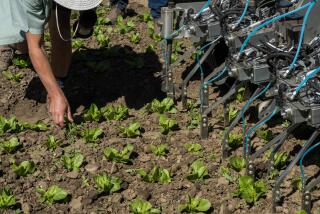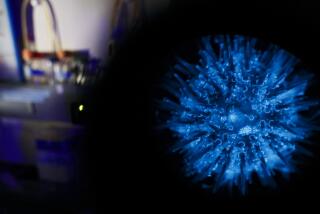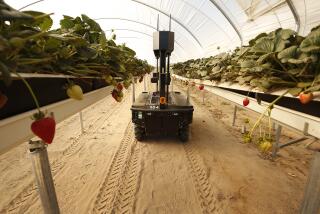Scripps, PPG to Seek Better Chemicals for Agriculture
LA JOLLA — A $120-million, 15-year project to develop high-tech agricultural chemicals to increase the world’s food supply has been launched by an agreement between Scripps Clinic and Research Foundation and a Pittsburgh-based chemical firm, PPG Industries.
A 40,000-square-foot addition to the Scripps molecular biology building will add 100 scientists and an undetermined number of support staff to Scripps’ internationally known research facility, Scripps officials said. Scripps currently has 150 scientists.
The agreement came after two years of private negotiations highlighted, according to insiders, by Scripps scientists’ insistence on retaining complete control of their lab work, unswayed by corporate pressures.
Many herbicides, pesticides, fungicides and insecticides contain toxins that can harm animals. The scientists will try to develop “absolutely safe” versions that kill weeds and pests without harming other wildlife, according to P.M. Chakrabarti, PPG director of research, development and licensing of chemicals.
The biotechnology project “could put more food on the world’s table” and even help “wipe out famine such as that in Africa” by allowing plants to survive in harsh regions where they might otherwise be destroyed by bad weather, pests or other problems, PPG President Edward J. Slack said.
Almost all, or all, of the 100 scientists will be hired by Scripps. PPG will establish a separate headquarters--possibly in Sorrento Valley--where its own researchers will try to determine whether the Scripps scientists’ basic findings could be translated into agricultural products.
38,000 Workers Worldwide
PPG is a major manufacturer of glass, fiberglass and coatings, in addition to chemicals including herbicides. It has 38,000 employees around the world, and its 1984 sales have been projected to exceed $4 billion, firm officials said.
Scripps scientists will explore the chemical structure of plants at the most basic level, using high-tech equipment such as computers that generate intricate, rotating images of molecule chains--images that resemble revolving Christmas trees. They will also use nuclear magnetic resonance, a technique that allows the use of powerful magnetic fields to determine the chemical composition of organisms.
Scripps President Dr. Charles Edwards cited research into weed-killers as an example of the effort to produce chemicals that don’t hurt good plants or other life forms.
“Instead of formulating a compound and then trying it out to see if it kills various weeds, our molecular biologists will isolate proteins that are unique to certain yield-robbing weeds,” Edwards said.
Slack added that “PPG scientists then will target herbicides to inactivate the proteins and will tailor compounds that interfere with the development of weeds. We believe that we can develop highly effective agricultural chemicals without the hazards inherent in many conventional pesticides or side effects that may damage the environment.”
Scripps and PPG officials stressed that none of the resulting products will be tested on agricultural tracts in the San Diego area.
Recently, scientists at UC Berkeley have encountered controversy over their proposal to test genetically engineered organisms by spraying them over plants in an effort to make the plants more frost-resistant. But the Scripps-PPG project is different because it involves the development of chemicals and protein chains rather than creation of living organisms.
Could Lead to New Drugs Although the project is geared toward developing better agricultural techniques, a side effect might be development of more effective drugs for people, Dr. Richard Lerner, chairman of the Scripps molecular biology department, said. “Most drugs actually come from plants--digitalis (for treating heart disease), penicillin (an antibiotic derived from molds), anti-malaria compounds that come from the bark of a tree,” he pointed out.
One feature of the agreement is that any scientific discoveries stemming from the project must lead to a patent application within 30 days, Lerner said.
Scripps insisted on that requirement to reassure faculty members who worried that, otherwise, PPG might suppress public discussion of a scientific discovery in order to prevent rivals from exploiting it for corporate gain, Lerner said.
“We’ll be sure no one will stand in the way of knowledge getting to the people,” Lerner said. “Our policy is, ‘You can give us the money, but we have to be able to do what we want.’ ”
All patent rights would be held by Scripps. PPG, in turn, would be licensed by Scripps to manufacture the resulting products. Royalties from the products would be divided between Scripps and the scientists responsible for the original discovery.
“This work is in no sense proprietary,” said Dr. Franklin Dixon, director of Scripps’ Research Institute. “Everything will be published by the scientists.”
As a result, the Scripps “faculty” --its 150 staff scientists--voted unanimously to support the joint project, Lerner said.
More to Read
Inside the business of entertainment
The Wide Shot brings you news, analysis and insights on everything from streaming wars to production — and what it all means for the future.
You may occasionally receive promotional content from the Los Angeles Times.










